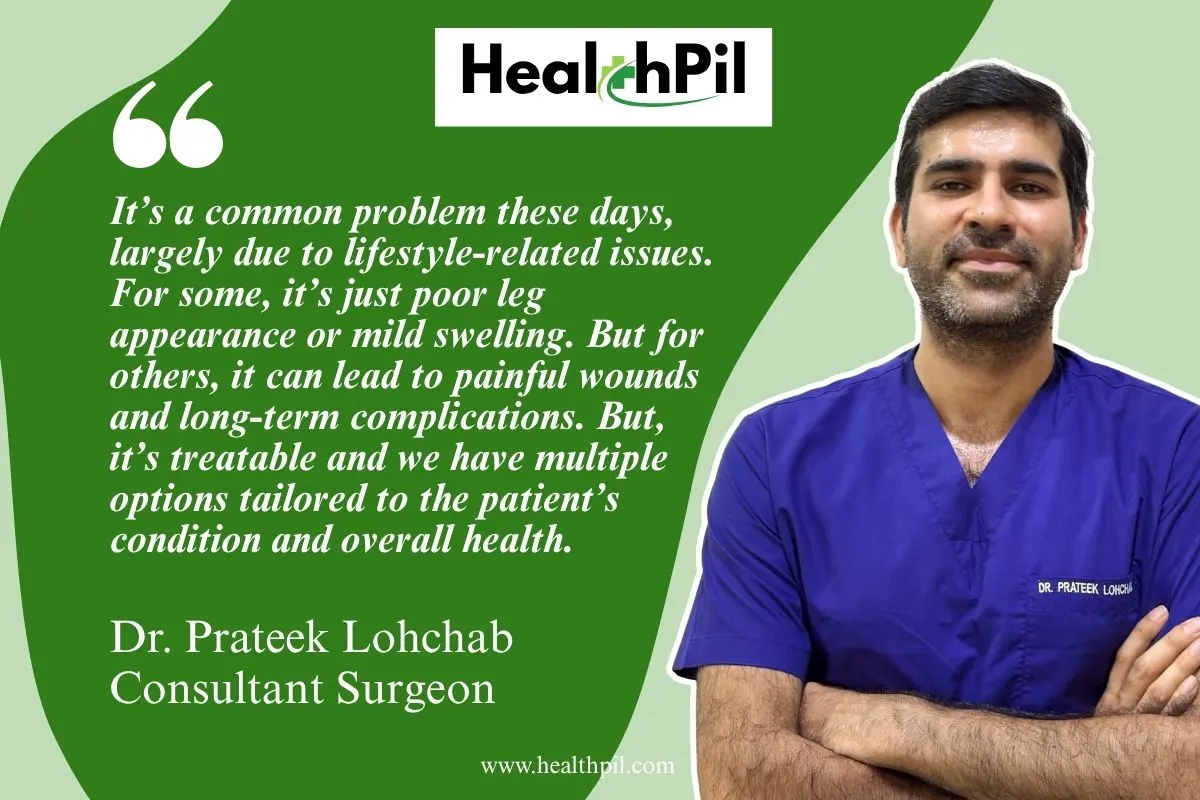News reports have revealed that Donald Trump was recently diagnosed with Chronic Venous Insufficiency. CVI affects millions of people around the world, especially in the elderly population. It causes leg swelling, heaviness, and discomfort, and can significantly affect quality of life if not treated properly.
So, What is Chronic Venous Insufficiency?
CVI, in simple terms, is a condition in which the veins in the legs are unable to push blood efficiently back to the heart. Normally, these veins have small one-way valves that help blood flow upwards, against gravity. But as these valves weaken due to age, lifestyle, or previous injuries, blood begins to pool in the legs. As blood pools in the lower limbs, the pressure inside the veins increases. This leads to symptoms such as swelling, tiredness, skin changes, or visible veins. In more advanced cases, it can result in painful ulcers that are difficult to treat.
Why Does this Happen, and who is at Risk?
CVI is quite common among the elderly, especially those above 60 or 70. But, as we grow older, the veins and their valves naturally lose strength. Some of the major risk factors can include:
● Long hours of sitting or standing (such as office jobs, teachers)
● Being overweight or obese
● Physical inactivity
● Family history of varicose veins or blood clots
● Previous leg injuries or surgeries
● Pregnancy
● Regular aspirin use
Dr. Prateek Lohchab, a general surgeon associated with HealthPil, explains,

“It’s a common problem these days, largely due to lifestyle-related issues. For some, it’s just poor leg appearance or mild swelling. But for others, it can lead to painful wounds and long-term complications. But, it’s treatable and we have multiple options tailored to the patient’s condition and overall health.”
Symptoms to Look Out For
CVI can begin with a mild swelling in the ankles after a long day or a dull ache when you stand too long. But over time, symptoms can worsen if the underlying issue is not addressed.
● Swollen legs or ankles, especially at the end of the day
● Tiredness or heaviness in the legs
● Skin darkening, thickening, or itching especially around the ankles
● Bulging varicose veins
● Open wounds or ulcers on the legs that are slow to heal
Most patients complain that the discomfort is worse in the evening and improves with rest or by keeping the legs elevated.
But, How Serious Can It Be?
CVI isn’t something that’s usually life-threatening, but it can cause complications. If you keep ignoring it, the constant swelling and pressure in your legs can lead to lingering pain, repeated skin infections, and even stubborn wounds that do not heal easily. Over time, even simple things like standing for a while, walking around the house, or getting through your regular workday can start feeling exhausting and painful.
Can It Be Treated?
While there’s no permanent cure to reverse the vein damage, CVI is highly manageable. Doctors generally suggest a combination of lifestyle changes and medical treatments based on how far the condition has progressed. The most common ways in which it is usually managed:
● Compression stockings: These help support weakened veins and prevent blood from pooling.
● Daily walking or calf exercises: Moving your legs helps push blood upwards.
● Leg elevation: Especially after long periods of sitting or standing.
● Manage weight to reduce pressure on your legs.
● Sitting for a long time can be just as harmful as standing for too long.
For more advanced cases, doctors may recommend the following treatments:
● Sclerotherapy: A simple procedure where a chemical solution is injected into the affected vein. This causes the vein to collapse and fade. It is most often used for smaller veins and also improves appearance.
● Endovenous ablation (using laser or radiofrequency): A minimally invasive treatment in which a thin tube is placed into the faulty vein. Heat is applied from within the vein to seal it shut. This allows blood to flow through nearby healthy veins instead.
● Surgical vein stripping: In more severe cases, a surgeon may remove the damaged vein through small incisions. This is done when the veins are large, painful, or when there are ulcers that are not healing.
The right choice depends on the patient’s age, general health, and how much their daily routine is being affected.
Why This Matters Especially in India
Trump’s diagnosis made headlines, but the bigger message is that this isn’t rare at all. In India, the condition remains largely underdiagnosed. Many people, especially the elderly believe leg swelling or heaviness is just a part of aging.
It is often the case that older adults come in only after skin changes or wounds appear when they’ve already lost the time when it could have been managed earlier and with ease.
How HealthPil Can Help
At HealthPil, we routinely consult with patients who’ve spent years dealing with leg symptoms, never realising it was a medical condition. If you or your loved ones are noticing signs like persistent swelling, tired legs, or visible veins, don’t wait for it to get worse.
You can book an online consultation with trusted vascular surgeons and specialists through HealthPil, ask your doubts for free, and even get second opinions from expert doctors.
Disclaimer:
This article is meant for general awareness only. If you are experiencing any symptoms similar to those in CVI, consult a doctor. You can also book an appointment with a specialist or ask a free question via HealthPil. Early diagnosis can help prevent serious complications.

